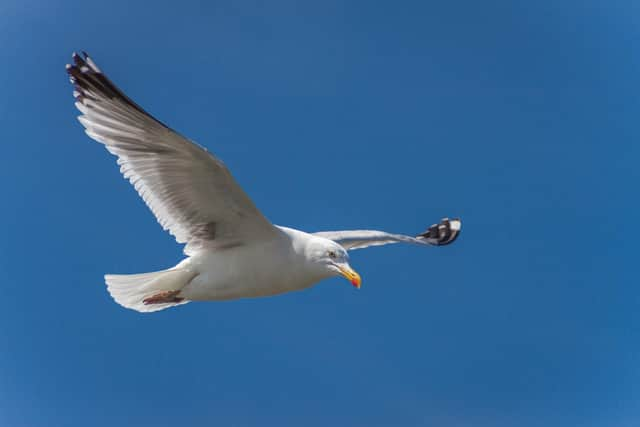Why we should learn to love Sunderland's gulls
and live on Freeview channel 276
In Sunderland we have people who have polarised opinions on them.
People are scared of them, people hate them, some people are ambivalent and then others love them.
I am in the latter camp – I love them.


Advertisement
Hide AdAdvertisement
Hide AdUntil I started volunteering for Pawz for Thought I was a bit scared of them, they are so big and noisy.
But seeing them close up has made me realise how magnificent they are. The main types of ‘seagulls’ we see are herring gulls and black backed gulls.
You may also spot some mini-versions of gulls and these are usually kittiwakes.
You may think that everywhere you look you can see gulls, around our houses, town centre and back lanes.
Advertisement
Hide AdAdvertisement
Hide AdThe reality is though, herring gulls are ‘red-listed’ as their numbers are in serious decline – we have lost 50% of the gull population since the 1970s and it continues to drop.
The reason we see gulls all around us and not where they should be, which is along the coastline, is because their food source – fish – has been massively depleted. Humans overfish to the degree there is little fish left for seabirds so they come further inland to find food – and the food they find is usually food scraps, from people throwing food down or litter – not good for them and certainly not good for our community.
It can be quite scary if you are walking down the street and you see a huge bird honing in on you trying to steal your food.
There is an easy answer though, don’t walk down the street with a Greggs pasty in your hand.
Advertisement
Hide AdAdvertisement
Hide AdThe birds don’t see the human, they see the food they are holding. They aren’t attacking you, they are trying to feed themselves and their young.
Gulls can live between five and 15 years but some have been known to live considerably longer, they mate and pair for life, and each parent takes turns in looking after eggs in their nest.
They can see in four colours – so the same as us humans but they can also see ultra violet.
They are hugely intelligent – I remember being told as a child how the gulls trick worms into coming to the surface so they can eat them, by doing a ‘raindance’ on the earth they live in.
Advertisement
Hide AdAdvertisement
Hide AdIn 2022 we had a huge outbreak of avian flu which decimated our local gulls, as well as kittiwakes and gannets.
It was heartbreaking for us to see so many dead and dying gulls. On some days in the summer the rescue was receiving hundreds of calls asking for help.
And unfortunately, there are some awful individuals who take pleasure in hurting them, we work closely with the police and others to ensure that we prosecute where we can – indeed last year we were informed of a conviction where the perpetrator got imprisoned and there are more currently going through the courts.
There is a proven scientific link between those who hurt animals and those who go on to hurt humans.
We really need to look after our gulls and see them for the magnificent creatures they are.